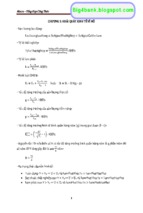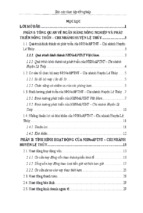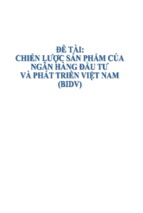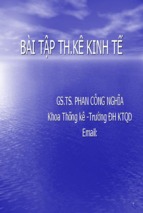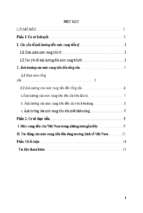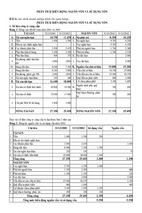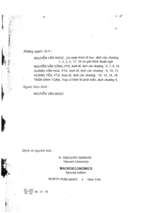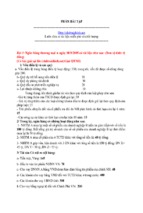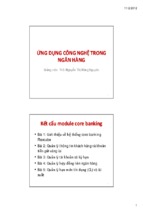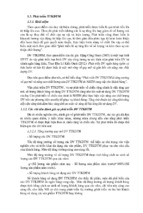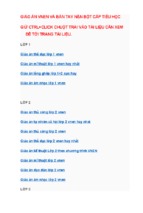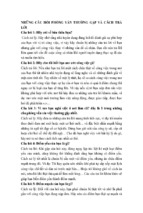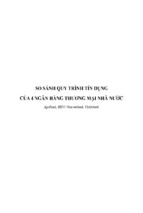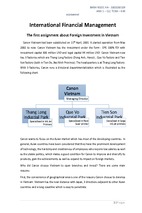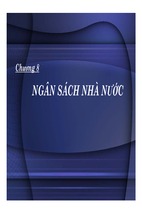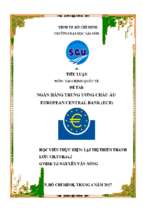Organizational Behavior, 14e (Robbins/Judge)
Chapter 5 Personality and Values
1) Which of the following is the best definition of personality?
A) Personality is an aggregate set of traits that are mostly determined at birth.
B) Personality is an aggregate set of traits that are determined over a person's lifetime.
C) Personality is all the ways in which an individual reacts to and interacts with others.
D) Personality is, for the most part, comprised of traits that cannot be measured or defined.
E) Personality is the static organization of how a person reacts to different environments.
Answer: C
Explanation: A) Personality is the sum total of ways in which an individual reacts to and interacts with others, usually described in terms of the measurable traits a person exhibits.
Diff: 1 Page Ref: 134-135
Topic: Personality
Skill: AACSB: Analytic Skills
Objective: Personality
Quest. Category: Concept/Definitional
LO: 1
2) Which of the following statements about the determinants of personality is true?
A) Personality appears to have no determinants.
B) Personality appears to be a result of external factors.
C) Personality appears to be a result of only environmental factors.
D) Personality appears to be a result of only hereditary factors.
E) Personality appears to be a result of both hereditary and environmental factors.
Answer: E
Explanation: A) Personality appears to be a result of both hereditary and environmental factors. However, research in personality development has tended to better support the importance of heredity over the environment.
Diff: 1 Page Ref: 134-135
Topic: Personality
Skill: AACSB: Analytic Skills
Objective: Personality Determinants
Quest. Category: Concept/Definitional
LO: 1
Organizational Behavior, 14e (Robbins/Judge)
Chapter 5 Personality and Values
1) Which of the following is the best definition of personality?
A) Personality is an aggregate set of traits that are mostly determined at birth.
B) Personality is an aggregate set of traits that are determined over a person's lifetime.
C) Personality is all the ways in which an individual reacts to and interacts with others.
D) Personality is, for the most part, comprised of traits that cannot be measured or defined.
E) Personality is the static organization of how a person reacts to different environments.
Answer: C
Explanation: A) Personality is the sum total of ways in which an individual reacts to and
interacts with others, usually described in terms of the measurable traits a person exhibits.
Diff: 1 Page Ref: 134-135
Topic: Personality
Skill: AACSB: Analytic Skills
Objective: Personality
Quest. Category: Concept/Definitional
LO: 1
2) Which of the following statements about the determinants of personality is true?
A) Personality appears to have no determinants.
B) Personality appears to be a result of external factors.
C) Personality appears to be a result of only environmental factors.
D) Personality appears to be a result of only hereditary factors.
E) Personality appears to be a result of both hereditary and environmental factors.
Answer: E
Explanation: A) Personality appears to be a result of both hereditary and environmental factors.
However, research in personality development has tended to better support the importance of
heredity over the environment.
Diff: 1 Page Ref: 134-135
Topic: Personality
Skill: AACSB: Analytic Skills
Objective: Personality Determinants
Quest. Category: Concept/Definitional
LO: 1
1
Copyright © 2011 Pearson Education, Inc.
3) The most common form of measuring personality is through self-report surveys. However, the
applicant could easily ________ .
A) change his personality instantly
B) not truly know his personality
C) refuse to take the survey
D) fail the survey, but be the best candidate
E) practice impression management
Answer: E
Explanation: A) One weakness of self-evaluation measures is that the respondent might lie or
practice impression management, that is, the person could "fake good" on the test to create a
good impression.
Diff: 1 Page Ref: 135
Topic: Personality
Skill: AACSB: Analytic Skills
Objective: Personality Determinants
Quest. Category: Concept/Definitional
LO: 1
4) If personality characteristics were completely dictated by ________, they would be fixed at
birth and no amount of experience could alter them.
A) job satisfaction
B) heredity
C) environment
D) situations
E) religion
Answer: B
Explanation: A) Heredity refers to factors determined at conception. Physical stature, facial
attractiveness, gender, temperament, muscle composition and reflexes, energy level, and
biological rhythms are generally considered to be either completely or substantially influenced
by who your parents are. If the hereditary factor were complete, there would be nothing a person
could do to change his personality.
Diff: 2 Page Ref: 135-136
Topic: Personality
Skill: AACSB: Analytic Skills
Objective: Personality
Quest. Category: Concept/Definitional
LO: 1
2
Copyright © 2011 Pearson Education, Inc.
5) Divina and Shawna are identical twins that were adopted at birth by very different families.
Divina grew up in Houston, Texas, and attended a large urban high school. Shawna grew up in a
small rural town and attended a high school with fewer than one hundred students. Which of the
following statements is most likely to be true about the two girls?
A) Divina is shy because she was just a number in a crowd. Shawna is outgoing because her
school was small.
B) Divina is outgoing because she had to fight to get people to recognize her in a large school.
Shawna is shy because she didn't want to stand out.
C) Both Divina and Shawna were highly influenced by their different environments and have
very different personalities.
D) Both Divina and Shawna are shy because they share many common personality traits based
on their genetic heredity.
E) Both Divina and Shawna are shy because the environments in which they were raised
demanded that they be shy to be successful.
Answer: D
Explanation: A) Studies of thousands of twins separated at birth indicate that the hereditary
determinants for personality play a stronger role than the environmental determinants. In almost
every case, regardless of environment, the twins would share personality traits, such as shyness.
Diff: 2 Page Ref: 135-136
Topic: Personality
Skill: AACSB: Analytic Skills
Objective: Personality
Quest. Category: Application
LO: 1
6) All of the following are classifications on the Myers-Briggs Type Indicator except ________.
A) extroverted/introverted
B) sensing/intuitive
C) perceiving/judging
D) independent/dependent
E) thinking/feeling
Answer: D
Explanation: A) In the Myers-Briggs Type Indicator, individuals are classified as extroverted or
introverted (E or I), sensing or intuitive (S or N), thinking or feeling (T or F), and judging or
perceiving ( J or P). Therefore independent/dependent is not a MBTI classification.
Diff: 2 Page Ref: 137
Topic: Personality
Skill: AACSB: Analytic Skills
Objective: Myers-Briggs Type Indicator Classifications
Quest. Category: Concept/Definitional
LO: 2
3
Copyright © 2011 Pearson Education, Inc.
7) What does the Myers-Briggs Type Indicator classification of "E or I" stand for?
A) extroverted/intuitive
B) emotional/introverted
C) extroverted/introverted
D) emotional/intuitive
E) sane/reflective
Answer: C
Explanation: A) In the Myers-Briggs Type Indicator, individuals are classified as extroverted or
introverted (E or I), sensing or intuitive (S or N), thinking or feeling (T or F), and judging or
perceiving ( J or P). Therefore independent/dependent is not a MBTI classification.
Diff: 2 Page Ref: 137
Topic: Personality
Skill: AACSB: Analytic Skills
Objective: Myers-Briggs Type Indicator Classifications
Quest. Category: Concept/Definitional
LO: 2
8) What does the Myers-Briggs Type Indicator classification of "S or N" stand for?
A) sensing/intuitive
B) sensing/thinking
C) emotional stability/intuitive
D) emotional stability/thinking
E) sane/reflective
Answer: A
Explanation: A) In the Myers-Briggs Type Indicator, individuals are classified as extroverted or
introverted (E or I), sensing or intuitive (S or N), thinking or feeling (T or F), and judging or
perceiving ( J or P). Therefore independent/dependent is not a MBTI classification.
Diff: 2 Page Ref: 137
Topic: Personality
Skill: AACSB: Analytic Skills
Objective: Myers-Briggs Type Indicator Classifications
Quest. Category: Concept/Definitional
LO: 2
4
Copyright © 2011 Pearson Education, Inc.
9) How would someone who is described as an ESTJ on the Myers-Briggs Type Indicator best be
described?
A) as a visionary
B) as a conceptualizer
C) as an innovator
D) as an organizer
E) as a leader
Answer: D
Explanation: A) ESTJs (extroverted, sensing, thinking, judging), are organizers. They are
realistic, logical, analytical, and decisive and have a natural head for business or mechanics.
They like to organize and run activities.
Diff: 2 Page Ref: 137
Topic: Personality
Skill: AACSB: Analytic Skills
Objective: Myers-Briggs Type Indicator Classifications
Quest. Category: Application
LO: 2
10) You wish to hire a person who is innovative, individualistic, versatile, and entrepreneurial.
Candidates for this position would ideally have what classification on the Myers-Briggs Type
Indicator?
A) INTJs
B) ESTJs
C) ENTPs
D) ISFPs
E) ESTPs
Answer: C
Explanation: A) The ENTP type is a conceptualizer, innovative, individualistic, versatile, and
attracted to entrepreneurial ideas. This person tends to be resourceful in solving challenging
problems.
Diff: 2 Page Ref: 137
Topic: Personality
Skill: AACSB: Analytic Skills
Objective: Myers-Briggs Type Indicator Classifications
Quest. Category: Application
LO: 2
5
Copyright © 2011 Pearson Education, Inc.
11) A book that profiled 13 contemporary business people who created super successful firms
including Apple Computer, FedEx, Honda Motors, Microsoft, and Sony found that all 13 were
what type of thinkers?
A) perceiving
B) sensing
C) intuitive
D) conscientious
E) feeling
Answer: C
Explanation: A) The book found that all were intuitive thinkers (NTs). This result is particularly
interesting because intuitive thinkers represent only about 5 percent of the population.
Diff: 2 Page Ref: 137
Topic: Personality
Skill: AACSB: Analytic Skills
Objective: Myers-Briggs Type Indicator
Quest. Category: Concept/Definitional
LO: 2
12) What is the major problem with the Myers-Briggs Type Indicator as a measure of
personality?
A) It is very difficult to administer.
B) It forces a person to be categorized as either one type or another.
C) It does not include enough dimensions to differentiate all the variety of human personality.
D) It tends to overemphasize intuitive personality traits over analytical personality traits.
E) It is very difficult to accurately interpret.
Answer: B
Explanation: A) Evidence is mixed about the MBTI's validity as a measure of personality, with
most of the evidence suggesting it is not a good indicator. One problem is that the test forces a
person into either one type or another (that is, you're either introverted or extroverted). There is
no in-between, though people can be both extroverted and introverted to some degree.
Diff: 2 Page Ref: 137
Topic: Personality
Skill: AACSB: Analytic Skills
Objective: Myers-Briggs Type Indicator
Quest. Category: Concept/Definitional
LO: 2
6
Copyright © 2011 Pearson Education, Inc.
13) Which of the following is not included in the Big Five model?
A) agreeableness
B) conscientiousness
C) intuitiveness
D) emotional stability
E) extroversion
Answer: C
Explanation: A) The big five personality factors are extraversion, agreeableness,
conscientiousness, emotional stability, openness to experience. Intuitiveness is not a factor.
Diff: 2 Page Ref: 138
Topic: Personality
Skill: AACSB: Analytic Skills
Objective: Big Five Personality Model
Quest. Category: Concept/Definitional
LO: 3
14) Which dimension of the Big Five model refers to an individual's propensity to defer to
others?
A) conscientiousness
B) agreeableness
C) extroversion
D) feeling
E) emotional stability
Answer: B
Explanation: A) The agreeableness dimension refers to an individual's propensity to defer to
others. Highly agreeable people are cooperative, warm, and trusting. People who score low on
agreeableness are cold, disagreeable, and antagonistic.
Diff: 2 Page Ref: 138
Topic: Personality
Skill: AACSB: Analytic Skills
Objective: Agreeableness
Quest. Category: Concept/Definitional
LO: 3
7
Copyright © 2011 Pearson Education, Inc.
15) Which dimension of the Big Five model is a measure of reliability?
A) extroversion
B) agreeableness
C) conscientiousness
D) feeling
E) emotional stability
Answer: C
Explanation: A) The conscientiousness dimension is a measure of reliability. A highly
conscientious person is responsible, organized, dependable, and persistent. Those who score low
on this dimension are easily distracted, disorganized, and unreliable.
Diff: 2 Page Ref: 138
Topic: Personality
Skill: AACSB: Analytic Skills
Objective: Conscientiousness
Quest. Category: Concept/Definitional
LO: 3
16) Marina loves to visit a new country every year. Her hobbies are visiting museums, painting,
traveling, and learning new languages. Which dimension of the Big Five model best describes
Marina, according to her hobbies?
A) extroversion
B) agreeableness
C) conscientiousness
D) openness to experience
E) emotional stability
Answer: D
Explanation: A) The openness to experience dimension addresses range of interests and
fascination with novelty. Extremely open people are creative, curious, and artistically sensitive.
Those at the other end of the openness category are conventional and find comfort in the
familiar.
Diff: 2 Page Ref: 138
Topic: Personality
Skill: AACSB: Analytic Skills
Objective: Conscientiousness
Quest. Category: Application
LO: 3
8
Copyright © 2011 Pearson Education, Inc.
17) A high score in which dimension of the Big Five model predicts good job performance for
all occupational groups?
A) extroversion
B) agreeableness
C) conscientiousness
D) emotional stability
E) openness to experience
Answer: C
Explanation: A) Conscientiousness, in the form of persistence, attention to detail, and setting of
high standards, was more important than other traits.
Diff: 2 Page Ref: 139
Topic: Personality
Skill: AACSB: Analytic Skills
Objective: Big Five Traits
Quest. Category: Concept/Definitional
LO: 4
18) Which of the following is not a way in which extroverts excel?
A) They are happier in their jobs and lives.
B) They experience more positive emotions.
C) They are prone to impulsive behavior.
D) They have high interpersonal job performance.
E) They are strong, assertive leaders.
Answer: C
Explanation: A) One downside of extraversion is that extroverts are more impulsive than
introverts; they are more likely to be absent from work and engage in risky behavior such as
unprotected sex, drinking, and other impulsive or sensation-seeking acts.
Diff: 2 Page Ref: 140
Topic: Personality
Skill: AACSB: Analytic Skills
Objective: Big Five Traits
Quest. Category: Concept/Definitional
LO: 5
9
Copyright © 2011 Pearson Education, Inc.
19) Why are agreeable people usually less successful in their careers?
A) They aren't happy in their lives.
B) They aren't liked by superiors.
C) They don't make many friends.
D) They don't negotiate well.
E) They aren't successful in school.
Answer: D
Explanation: A) A downside of agreeableness is that it is associated with lower levels of career
success (especially earnings). Agreeable individuals may be poorer negotiators; they are so
concerned with pleasing others that they often don't negotiate as much for themselves as they
might.
Diff: 2 Page Ref: 140
Topic: Personality
Skill: AACSB: Analytic Skills
Objective: Big Five Traits
Quest. Category: Concept/Definitional
LO: 5
20) What is the term used for the degree to which people like or dislike themselves?
A) core self-evaluation
B) authoritarianism
C) locus of control
D) Machiavellianism
E) efficacy
Answer: A
Explanation: A) Core self-evaluation is the degree to which an individual likes or dislikes
himself or herself, whether the person sees himself or herself as capable and effective, and
whether the person feels in control of his or her environment or powerless over the environment.
Diff: 2 Page Ref: 140-142
Topic: Personality
Skill: AACSB: Analytic Skills
Objective: Core Self-Evaluation
Quest. Category: Concept/Definitional
LO: 5
10
Copyright © 2011 Pearson Education, Inc.
21) Which of the following statements about people with positive core self-evaluations is true?
A) They set goals which are easily obtainable.
B) They do not attribute positive outcomes to their own actions.
C) They are overconfident.
D) They take responsibility less frequently.
E) They tend to obtain more complex and challenging jobs.
Answer: E
Explanation: A) People with positive core self-evaluation see more challenge in their job and
attain more complex jobs. They also set more ambitious goals, are more committed to their
goals, and persist longer in attempting to reach these goals.
Diff: 2 Page Ref: 140-141
Topic: Personality
Skill: AACSB: Analytic Skills
Objective: Core Self-Evaluation
Quest. Category: Concept/Definitional
LO: 5
22) What personality characteristic centers on whether a person is unemotional and pragmatic
and believes that ends can justify means?
A) authoritarianism
B) Machiavellianism
C) Type A personality
D) risk-taking
E) Narcissism
Answer: B
Explanation: A) Machiavellianism is the degree to which an individual is pragmatic, maintains
emotional distance, and believes that ends can justify means.
Diff: 2 Page Ref: 141-142
Topic: Personality
Skill: AACSB: Analytic Skills
Objective: Machiavellianism
Quest. Category: Concept/Definitional
LO: 5
11
Copyright © 2011 Pearson Education, Inc.
23) A high Mach would be most suited for which of the following positions?
A) a manager who leads a team of geographically distant consultants
B) a human resources manager who ensures staff firings do not place the company in legal
jeopardy
C) an ombudsman who investigates consumer complaints and mediates their outcome
D) an auditor who checks that all company accounts are kept properly
E) a real estate broker negotiating in the lease of large amounts of office space
Answer: E
Explanation: A) High Machs make good employees in jobs that require bargaining skills (such
as labor negotiation) or that offer substantial rewards for winning (such as commissioned sales).
The best job for him would be that of the broker negotiating the lease.
Diff: 2 Page Ref: 142
Topic: Personality
Skill: AACSB: Analytic Skills
Objective: Machiavellianism
Quest. Category: Application
LO: 5
24) During an annual review Mitchel made the following assertion: "When I look at myself and
my performance I see that what I have achieved is outstanding and has, not surprisingly, won me
the admiration and envy of most of my colleagues. I notice that everyone keeps talking about
me; they are all just waiting to find out what triumph I will pull off next! In short, I don't just
deserve a raise, but need one, since without me, let's face it, the place would simply fall apart."
Which of the following is probably the best descriptor of Mitchel's personality?
A) Type A
B) external locus of control
C) high-self monitoring
D) narcissistic
E) high Mach
Answer: D
Explanation: A) Mitchel is a narcissist. Narcissism is the tendency to be arrogant, have a
grandiose sense of self-importance, require excessive admiration, and have a sense of
entitlement.
Diff: 2 Page Ref: 141-142
Topic: Personality
Skill: AACSB: Analytic Skills
Objective: Narcissism
Quest. Category: Application
LO: 5
12
Copyright © 2011 Pearson Education, Inc.
25) Which of the following is not a possible result from hiring Marsha, an applicant with a
narcissistic personality?
A) Marsha is likely to be disrespectful and condescending to other coworkers.
B) Marsha is likely to exploit shy and introverted coworkers.
C) Marsha is likely to keep important information to herself.
D) Marsha is likely to be more productive than her coworkers.
E) Marsha is likely to refuse to help coworkers.
Answer: D
Explanation: A) Narcissists often "talk down" to those who threaten them, treating others as if
they were inferior. They also tend to be selfish and exploitive and believe others exist for their
benefit. Their bosses rate them as less effective at their jobs than others, particularly when it
comes to helping other people.
Diff: 2 Page Ref: 142
Topic: Personality
Skill: AACSB: Analytic Skills
Objective: Narcissism
Quest. Category: Application
LO: 5
26) How would you describe an individual who is capable of presenting striking contradictions
between who they are in public and who they are privately?
A) low Mach
B) high Mach
C) low self-monitoring
D) high self-monitoring
E) narcissistic
Answer: D
Explanation: A) Self-monitoring refers to an individual's ability to adjust his or her behavior to
external, situational factors. Individuals high in self-monitoring show considerable adaptability
in adjusting their behavior to external situational factors. They are highly sensitive to external
cues and can behave differently in different situations.
Diff: 2 Page Ref: 142
Topic: Personality
Skill: AACSB: Analytic Skills
Objective: Self-Monitoring
Quest. Category: Concept/Definitional
LO: 5
13
Copyright © 2011 Pearson Education, Inc.
27) Which of the following statements about low self-monitors is true?
A) They have a low behavioral consistency between who they are and what they do.
B) They tend to rate their performance much more highly than do outside observers.
C) They tend to pay less attention to the behavior of others than high self-monitors.
D) They usually receive high performance ratings.
E) They tend to thrive in areas that require them to take risks.
Answer: C
Explanation: A) High self-monitors pay close attention to the behavior of others and are capable
of conforming to different situations. Low self-monitors are just the opposite, and tend to not
notice other's behavior.
Diff: 2 Page Ref: 142
Topic: Personality
Skill: AACSB: Analytic Skills
Objective: Self-Monitoring
Quest. Category: Concept/Definitional
LO: 5
28) Which of the following has the highest intrinsic risk-taking propensity?
A) an accountant performing auditing activities
B) a stock trader in a brokerage firm
C) a computer technologist
D) a marketing representative
E) a school crossing guard
Answer: B
Explanation: A) A high risk-taking propensity may lead to more effective performance for a
stock trader in a brokerage firm because that type of job demands rapid decision making.
Diff: 2 Page Ref: 143
Topic: Personality
Skill: AACSB: Analytic Skills
Objective: Risk-Taking
Quest. Category: Application
LO: 5
14
Copyright © 2011 Pearson Education, Inc.
29) Zach gulps his food, is constantly spinning his pen in class, always walks quickly, gets bored
with slow intellectual movies, and is annoyed that it's taking four and a half years to graduate
from business school. Zach is probably ________.
A) a Type A personality
B) a self-monitoring personality
C) a narcissist
D) A Type B personality
E) a proactive personality
Answer: A
Explanation: A) Type As are always moving, walking, and eating rapidly, feel impatient with
the rate at which most events take place, strive to think or do two or more things at once, cannot
cope with leisure time.
Diff: 2 Page Ref: 143
Topic: Personality
Skill: AACSB: Analytic Skills
Objective: Self-Monitoring
Quest. Category: Application
LO: 5
30) What term is used to describe the personality of an individual who is aggressively involved
in an incessant struggle to achieve more and more in less and less time?
A) Type A personality
B) Type B personality
C) proactive personality
D) narcissistic personality
E) high Mach personality
Answer: A
Explanation: A) A person with a type A personality has an aggressive involvement in a chronic,
incessant struggle to achieve more and more in less and less time and, if necessary, against the
opposing efforts of other things or other people.
Diff: 1 Page Ref: 144
Topic: Personality
Skill: AACSB: Analytic Skills
Objective: Type A Personality
Quest. Category: Concept/Definitional
LO: 5
15
Copyright © 2011 Pearson Education, Inc.
31) Which of the following is true of people with a Type A personality?
A) They don't tend to feel a lot of stress.
B) They play for fun and relaxation.
C) They work fast .
D) They are unpredictable.
E) They are generally content with their place in the world.
Answer: C
Explanation: A) Type As are fast workers because they emphasize quantity over quality. They
work long hours and try to get more and more done.
Diff: 2 Page Ref: 143-144
Topic: Personality
Skill: AACSB: Analytic Skills
Objective: Type A Personality
Quest. Category: Concept/Definitional
LO: 5
32) Which of the following is not a characteristic of the Type B personality?
A) A Type B does not suffer from a sense of time urgency, with its accompanying impatience.
B) A Type B plays for fun and relaxation.
C) A Type B strives to think or do two or more things at once.
D) A Type B can relax without guilt.
E) A Type B does not need to discuss their achievements.
Answer: C
Explanation: A) The Type B is exactly the opposite of Type A, and is rarely harried by the
desire to obtain an increasing number of things or do many things at once. They are less stressed
and more relaxed.
Diff: 2 Page Ref: 143
Topic: Personality
Skill: AACSB: Analytic Skills
Objective: Type B Personality
Quest. Category: Concept/Definitional
LO: 5
16
Copyright © 2011 Pearson Education, Inc.
33) Which of the following terms best describes people who show initiative, take action, and
persevere until meaningful change occurs?
A) Type A
B) high self esteem
C) proactive personalities
D) high conscientiousness
E) high Mach
Answer: C
Explanation: A) A person with a proactive personality is defined as one who can identify
opportunities, show initiative, take action, and persevere until meaningful change occurs. They
create positive change in their environments, regardless of the obstacles that may exist.
Diff: 2 Page Ref: 144
Topic: Personality
Skill: AACSB: Analytic Skills
Objective: Proactive Personality
Quest. Category: Concept/Definitional
LO: 5
34) Which of the following personality traits is most likely to help achieve career success?
A) proactive
B) high S.E
C) Type A
D) extrovert
E) agreeable
Answer: A
Explanation: A) As individuals, proactives are more likely than others to achieve career success.
They select, create, and influence work situations in their favor. They seek out job and
organizational information, develop contacts in high places, engage in career planning, and
demonstrate persistence in the face of career obstacles.
Diff: 2 Page Ref: 145
Topic: Personality
Skill: AACSB: Analytic Skills
Objective: Proactive Personality
Quest. Category: Concept/Definitional
LO: 5
17
Copyright © 2011 Pearson Education, Inc.
35) Which of the following terms describes basic convictions that "a specific mode of conduct or
end state of existence is personally or socially preferable to an opposite mode of conduct"?
A) values
B) attitudes
C) convictions
D) preferences
E) affectual preferences
Answer: A
Explanation: A) Values represent basic convictions that a specific mode of conduct or end-state
of existence is personally or socially preferable to an opposite or converse mode of conduct or
end-state of existence. Values contain a judgmental element in that they carry an individual's
ideas as to what is right, good, or desirable.
Diff: 2 Page Ref: 145
Topic: Personality
Skill: AACSB: Analytic Skills
Objective: Values
Quest. Category: Concept/Definitional
LO: 6
36) What does the content attribute of a value state?
A) that the value is complete
B) that the value is important
C) that the value is strongly or weakly held
D) the behavior associated with that value
E) that the value is not transient
Answer: B
Explanation: A) Values have both content and intensity attributes. The content attribute says a
mode of conduct or end-state of existence is important. The intensity attribute specifies how
important it is.
Diff: 2 Page Ref: 145
Topic: Personality
Skill: AACSB: Analytic Skills
Objective: Value Attributes
Quest. Category: Concept/Definitional
LO: 6
18
Copyright © 2011 Pearson Education, Inc.
37) When we rank an individual's values in order of their ________, we obtain the person's value
system.
A) intensity
B) content
C) context
D) social acceptance
E) social needs
Answer: A
Explanation: A) A value system is defined as a hierarchy based on a ranking of an individual's
values in terms of their intensity.
Diff: 2 Page Ref: 145
Topic: Personality
Skill: AACSB: Analytic Skills
Objective: Value System
Quest. Category: Concept/Definitional
LO: 6
38) Which of the following statements about values is true?
A) Values are flexible.
B) Values are synonymous with attitudes.
C) Values tend to be consistent among occupational groups.
D) Values are fairly stable over time.
E) Values change easily when they are called into question.
Answer: D
Explanation: A) Values tend to be relatively stable and enduring, with most people having
acquired a significant portion of their values in their early years, from parents, teachers, friends,
and others.
Diff: 2 Page Ref: 146
Topic: Personality
Skill: AACSB: Analytic Skills
Objective: Values
Quest. Category: Concept/Definitional
LO: 6
19
Copyright © 2011 Pearson Education, Inc.
39) Values are important to organizational behavior because they ________.
A) allow the study of alignment of organizational policies
B) lay the foundation for the understanding of attitudes and motivation
C) form the supporting foundation for the study of ethics
D) are an integral part of culture
E) encourage ethical behavior
Answer: B
Explanation: A) Values lay the foundation for our understanding of people's attitudes and
motivation and influence our perceptions. We enter an organization with preconceived notions of
what "ought" and "ought not" to be. If the company's values are in line with the employee's, the
employee is more likely to be satisfied.
Diff: 2 Page Ref: 146
Topic: Personality
Skill: AACSB: Analytic Skills
Objective: Importance of Values
Quest. Category: Concept/Definitional
LO: 6
40) Which of the following values would be most likely to be considered a terminal value by
Rokeach?
A) ambition
B) broad-mindedness
C) helpfulness
D) a sense of accomplishment
E) self-control
Answer: D
Explanation: A) Terminal values refers to desirable end-states. These are the goals a person
would like to achieve during his or her lifetime. A sense of accomplishment is an end-state goal.
The other answers are means which a person could use to get to that goal.
Diff: 2 Page Ref: 146
Topic: Personality
Skill: AACSB: Analytic Skills
Objective: Rokeach Value Survey
Quest. Category: Concept/Definitional
LO: 6
20
Copyright © 2011 Pearson Education, Inc.
- Xem thêm -

